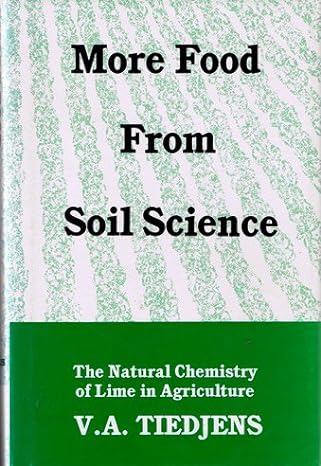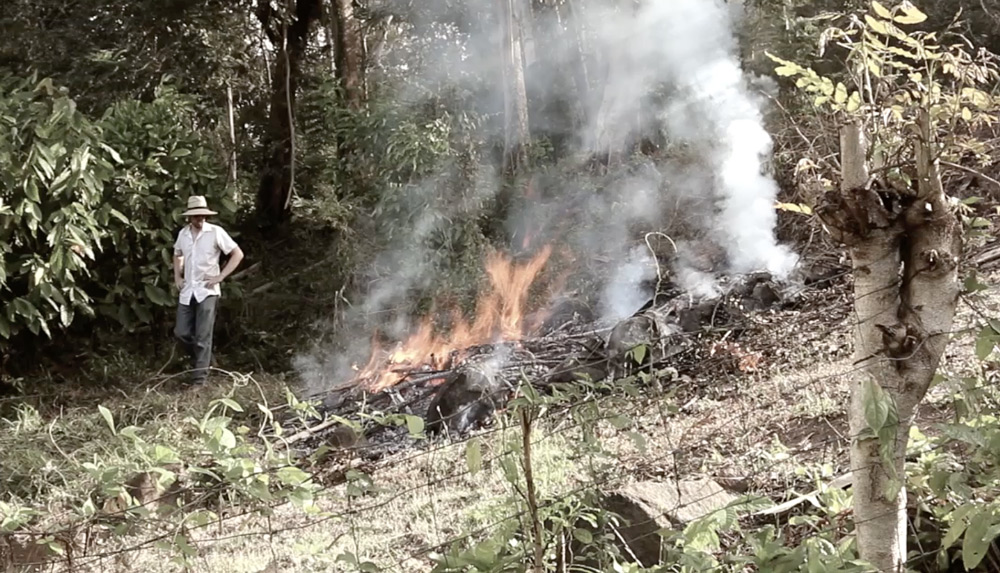Slash and burn may not be the devil it’s been portrayed to be. Like many gardening/farming practices, there are upsides and downsides.
If you don’t simply burn everything to ash and till the area, it could improve the soil for an extended period of time. It’s going to depend on soil, climate, rainfall, and who knows what else, but there are times that fire makes things better.
As I wrote in my post from October 9th:
Burned areas often grow back very nicely as the ashes and charcoal feed the next crops. I visited one couple who had cleared the woods around their house and replaced it with a large lawn and pasture. The homeowner pointed out multiple dark green areas in the grass where he had burned piles of trees years before. Even after almost a decade, they were still maintaining fertility (…) Seeing such long-term improvements in fertility does tend to support our biochar/terra preta experiments.
Beneath that post, Ashkan comments:
V.A. Tiedjen’s book mentions a story about some Mennonite(??) settlers who moved into an area and found that plants grew way better where the natives had kept fire pits. I think he mentions that the natives tended to toss their shellfish remains into the fire, too. In any case, the point was that this was evidence for the effectiveness of calcium at improving fertility. Since calcium is the principle element in wood ash, that, plus the char (a resilient organic matter) might be why they had such good fertility after burning brush in Florida.
This is the book referenced:

It’s out of print, but I just bought a copy on ebay. I was also able to download a .pdf, and found the anecdote related by Ashkan:
Wood ashes have been used by plant-growing people since the eighteenth century. The story is told about the Mennonite scout who was sent out to look over a site for a settlement. When he inquired about an area adjacent to a river in one of the southern states, he was told the land was worn out. But he took a second look and found small round areas covering five to ten square yards where weeds grew in abundance. On examination he found that these plants had deep roots, while those nearby were very shallow. As he studied these areas, he surmised that they were the campfire sites of Indian tribes who had frequented the area many years before. Wood ashes and burned oyster shells had been left. He encouraged his people to buy this “poor” land and apply liming materials to grow their crops. Today this is a highly productive community of farmers.
I don’t know why he claims “since the eighteenth century,” when the use of ashes for fertilization goes back much farther than that. However, he also claims in the introduction that Jesus fed the “Philistines” with 5 loaves and two fishes, so there are some obvious errors in the text. This doesn’t make it devoid of useful information, I am sure, but it’s something to keep in mind if you read the book.
The long-term effect of burning is where my interest lies. One Grenadian told me that he knew a farmer who fed his land with “nothing but ashes,” and he did great.
Calcium is part of the key to successful yields. But will carbon in the form of biochar/charcoal help keep it around?
It seems to make a difference. We’ll keep studying and experimenting.
And now I have another book to read.


7 comments
I’m experimenting with the biochar. I have a metal can with holes in the bottom and in the sides — probably about a 30 to 40 gallon size, smaller than a burn barrel. We had some trees cut in the wooded area and I’ve been safely burning small limbs and such a little at the time. The pine tree was dead so it’s burning fast. Added a bunch of dead sweet gum limbs too. It was struck by lighting. Actually enjoying the day keeping fire stoked and under control. At the end of the evening, been dousing it with the water hose and the next morning, putting entire can in a wheel barrow and adding scoops to garden beds and compost. It seems I’m washing the ash out onto the ground. And what is left is just the charred wood that built up. Adding it to small compost piles in each bed and also into one I’m topping off with soil. Those small compost bins on the garden beds get the banana peels, coffee grounds, egg shell and kitchen scraps. Bigger compost in the woods. I may go with bigger fire on the ground cleaning up those trees but this was a small scale safe way to get started. Off topic, but have gum logs and a small oak logs from this tree cutting — going to innoculate with shitake and chicken of the woods plugs. That’s also a first. Finally cut out a bunch of the Chinese tallow. Yeah! It will get burned on the ground and char and ashes spread, as I did hack and squirt a minute amount of herbicide on girdles a year or two ago. Interesting article. We called those sites middens that were full of shells and broken pottery. Essentially, the indigenous garbage piles. We found some near the bay in the woods when hunting for old settlements and artifacts in the past.
This sounds really good. I made about 150 gallons of char and need to start spreading it.
I’ve seen good mushrooms growing from “trash” trees, even the tallow trees – I think that will work.
I’ll probably let the larger tallow logs decompose and see what happens. Innoculate the pristine oak and sweet gum. Speaking of charcoal , the old 1938 built house has charcoal ALL under it. It was a mess until we added the plastic vapor guard for the remodal and crawling underneath. It’s near the old train depot. I wonder if it was simply fill or if the charcoal served another purpose, of course, not for soil fertility like your original post but perhaps for mold repellent or moisture absorption and odor control. Since the old train fire boxes were probably wood or coal fired for the steam engine, it would have been a plentiful resource for use back in the day. I’m sure it went into gardens and nearby yards also.
I always try to do more charcoal/biochar and stay away from too much ash because I have a very high PH soil . I believe any increased alkalinity would probably be harmful even if it provided nutrients. But for acid soils i think its a no brainer!
Yes, that is wise. Probably compost and charcoal is the best.
How do I make it “charcoal” instead of ash?
(I have verrry high alkaline soil).
Do I have to burn the ashes without air?
Or can I just rinse the ashes to get the calcium out?
Just burn, then when it’s red embers, blast it out with the hose and extinguish the fire.
Comments are closed.